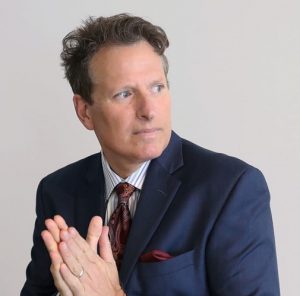Investing in 75+ Emerging Markets, delivering equity-like returns with bond-like volatility

In Kürze
Peter Marber is the Portfolio Manager of the Aperture New World Opportunities strategy. For over 30 years, Peter has professionally invested billions of dollars for many of the world’s largest companies at firms including Loomis, Sayles & Company, HSBC, and Wasserstein & Co. Peter is based in Aperture’s New York office. Peter earned his B.A. at Johns Hopkins, his M.I.A. from Columbia, and his Ph.D from The University of Cambridge.
FUND FACTS
Domicile
Luxembourg
Inception date
01/04/2019
ISIN (I USD Acc.)
LU1889860562
ISIN (I EUR-H Acc.)
LU1889860646
Benchmark
Bloomberg Barclays EM USD Agg 1 5 Year Unhedged TR
Management fees
0.40%
Performance fees
30% > benchmark
Management Company
Generali Investments Luxembourg S.A.
Investment Manager
Aperture Investors

Peter Marber
CIO Emerging Markets and Portfolio Manager
Investing in 75+ Emerging Markets, delivering equity-like returns with bond-like volatility
Two years on
It’s now two years since the launch of the Aperture New World Opportunities Fund. The fund was designed to deliver equity-like returns with bond-like volatility. Since inception, that’s exactly what it’s done.
With a portfolio consisting primarily of short-duration, hard-currency emerging-market bonds, the fund has outperformed its benchmark, the Bloomberg Barclays Emerging Markets USD Aggregate 1-5 Year Index, by 1.36 percentage points a year. Net of fees, the fund’s annualised return is 15.51% in USD with volatility around 4% – not bad considering this includes the market gyrations during the pandemic (1Y performance, as at end of March 2021) (1).
Navigating the Covid crisis
Despite the severe challenges of the Covid-19 crisis, the fund’s performance was particularly strong in 2020. With a net-of-fees return of 7.90%, beating gross market returns from both US high-yield and US municipal indices.
This performance is a testament to the experience of the fund’s nine-strong team, 5 analysts and 4 traders, led by pioneering and award-winning global investor Peter Marber.
Targeting superior performance
Peter notes that returns from traditional short-duration bond funds don’t look very different to those of money-market funds. But the New World Opportunities Fund targets much more attractive performance (2).
This is done in two ways. First, the fund aims to achieve a superior market return by harnessing a persistent anomaly in investors’ attitude to 75+ developing countries in Asia, Africa, Middle East, Latin America, and the former Soviet Union . Then, if this superior beta is secured, the team looks to add alpha through wide-ranging strategies not normally associated with short-duration bonds. Throughout, the team aims to damp down volatility
READ MORE
The “xenophobia premium”
The fund’s main focus is on short-duration, hard-currency bonds issued by the companies and governments in emerging markets, although Marber believes much of this universe is better rated and economically stronger than many developed countries. This fundamental strategy accounts for 90–95% of the portfolio.
These bonds offer attractive risk-adjusted premia that stem from a longstanding anomaly. Although default rates in emerging-market countries have historically been lower than in developed markets, emerging-market hard-currency bonds (typically in US Dollars) offer higher yields.
Peter describes this as the “xenophobia premium” – the excess return that developed-world investors demand from emerging-market bonds versus similar rated bond in the US or Western Europe.
This reflects their longstanding anxiety about being exposed to emerging markets, which they still see as exotic, unpredictable and inherently risky.
Given the lower default rates in emerging markets, this anxiety is ill founded and irrational. But it’s persistent and powerful too. “It allows us to harness a bigger risk premium for our beta”, Peter says, “So that’s exactly what we aim to do” (3).
In this way, the fund offers its investors a credit arbitrage opportunity. The team then applies successive screens and a country model to whittle down the bond universe from over 2,000 to a pool of around 250 – which still allows the portfolio ample room for diversification. The country model draws also on environmental, social and governance (ESG) factors, which the team has been incorporating into the process for almost a decade.
Adding alpha
With the core portfolio invested, Peter and the team then look to add alpha in a wide variety of ways. Most bond managers aim to outperform by simply investing in high-yield or “junk’ bonds. But this is inherently risky as it rests on getting the individual bond selections right. Bond risks are skewed to the downside, as defaults can savagely slash returns.
Peter and the team take a very different approach. They consider anything that’s liquid or tradable in the emerging-markets universe, including derivatives, equities, local-currency bonds and long/short investing. And they try to make full use of these opportunities to access alpha and control volatility for an “all-weather” philosophy to add value in most market conditions.
Relative value
An important strategy here is relative value, sometimes referred to as “pairs trading” involving a long and corresponding short position. For example, if the team believed longer-dated local interest rates in an Asian country were falling faster than its shorter rates, it might buy a local 10-year bond and hedge the currency risk by shorting a 2-year bond of issue – creating what bond traders call a “flattener.”
Another manifestation of relative value is in equities. Emerging-market equities are inherently volatile, so the team employs lots of hedges to take out those risks. By focusing on a few favoured companies and going short in others, the team can bring the volatility right down than looks more like bonds.
Relative-value strategies offer a very low-risk way to add alpha for clients. During the Covid crisis, the team made good returns from going long online retailers and short their offline equivalents, in both China and Brazil.
Technical tactics
A second alpha-seeking strategy is a technical approach. The team has two technical specialists who look for short-term trading opportunities. These might present themselves over a month, a week or even a single day. That contrasts with relative-value trades, which typically take time to mature.
The team looks at a variety of indicators to see who’s buying or selling what, as this creates short-term opportunities. Here again, the team can go both long and short. In 2020, the fund benefited from opportunistic positions in digital sectors and “reopening” plays in tourism and hospitality.
In addition to the structural credit premia tied to investor anxieties mentioned earlier, emerging-markets nervousness can often create short-term technical opportunities. When investors panic in emerging-markets, Marber notes, they tend to “sell now and think later.” This occurred in March 2020, as Covid struck, echoing the knee-jerk sell-offs of 2008 and 2011. These routs tend to be short-lived and create opportunities for cooler-headed strategies such as Aperture’s fund.
Special situations
Finally, there are special situations. These can arise from be country defaults – like that of Ecuador last year. When the oil price plummeted, Ecuador had to restructure its debt, which plunged from to less than 30 cents on the dollar. Peter and the team saw an opportunity for a significant return. The risk was very limited; following the default, there was little room for downside left (4).
Other opportunities arose in 2020 in high-yielding countries dependent on tourism, such as the Dominican Republic. Their bonds sold off heavily as the pandemic took hold. But that presented a forward-looking opportunity given the likely rebound as Covid abates. The team also bought longer-dated bonds in countries such as the Czech Republic when pandemic-prompted rate cuts looked imminent.
The outlook: same as it ever was?
After two years, Peter and the team are looking ahead with confidence. As the global economy recovers from Covid, a rally in emerging-market assets may be imminent; emerging markets tend to strengthen with commodity prices and global trade as the US dollar weakens.
In any case, the structural opportunity underpinning the Fund’s core strategy looks set to persist, just as it has throughout Peter’s decades-long career.
Meanwhile, the flexibility of the Fund’s alpha-seeking strategies should stand it in good stead5.
“When you can go long or short in 75 countries,” says Peter, “there are always opportunities out there. Emerging markets have most of the world’s population and generate the lion’s share of its economic activity. So the biggest risk that I see in these markets is not investing in them.”
1.Source: Aperture. Past performance is not a reliable indicator of future performance of the Fund.
2.There can be no assurance that the investment objective will be achieved or that there will be a return on capital.
3.There can be no assurance that the investment objective will be achieved or that there will be a return on capital.
4.Past performance is not a reliable indicator of future performance of the Fund.
5.There can be no assurance that the investment objective will be achieved or that there will be a return on capital.
The views expressed are those of Peter Marber but may not be the views of Aperture Investors, LLC (“Aperture”). Marketing communication relating to Aperture Investors SICAV (the “Fund”) and its compartment New World Opportunities (the “Sub-Fund”). Only for professional investors DE, ES, FR, GB, IT, LU. It is not addressed to retail investors or to any US Person. The Fund is an open-ended investment company with variable share capital (SICAV) under Luxembourg Law, qualifying as an undertaking for collective investment in transferable securities (UCITS). Generali Investments Luxembourg S.A., a public limited liability company (société anonyme) under Luxembourg Law, the Management Company. It is authorised in Luxembourg and regulated by the Commission de Surveillance du Secteur Financier (CSSF). This communication is issued by the Management Company. Before making any investment decision you should read the KIID, Prospectus, annual and semi-annual reports. These are available in English free of charge from Generali Investments Luxembourg S.A., 4 Rue Jean Monnet, L-2180 Luxembourg, Grand Duchy of Luxembourg or at the following e-mail address:GILfundInfo@generali-invest.com. Spain: CNMV Number: 1797. United Kingdom: This communication is a financial promotion and has been approved for the purposes of Section 21 of the Financial Services and Markets Act 2000, by (insert UK entity name) for professional Clients in the United Kingdom. The Sub-Fund is a Recognised scheme in the United Kingdom under the Financial Services and Markets Act 2000. This publication may not be reproduced (in whole or in part), transmitted, modified, or used for any public or commercial purpose without the prior written permission of Aperture. Any opinions or forecasts provided, they are as of the dates indicated, subject to change without notice, may not be accurate and do not represent a recommendation or offer of any investment. Data contained herein should not be relied upon as the basis for any investment decision. For further information on potential risks related to an investment in the Fund, please refer to the prospectus. The value of an investment and any income from it can go down as well as up and investors may not get back the original amount invested. The fact of such registration or approval, however, does not mean that any regulator has determined the suitability of the product(s) for all investors. Investors should carefully consider the terms of the investment and seek professional legal, financial or tax advice where necessary before taking any decision to invest in any fund(s). Past performance of the Fund is no guarantee for future performance. Any performance presented herein is for illustrative purposes only.
